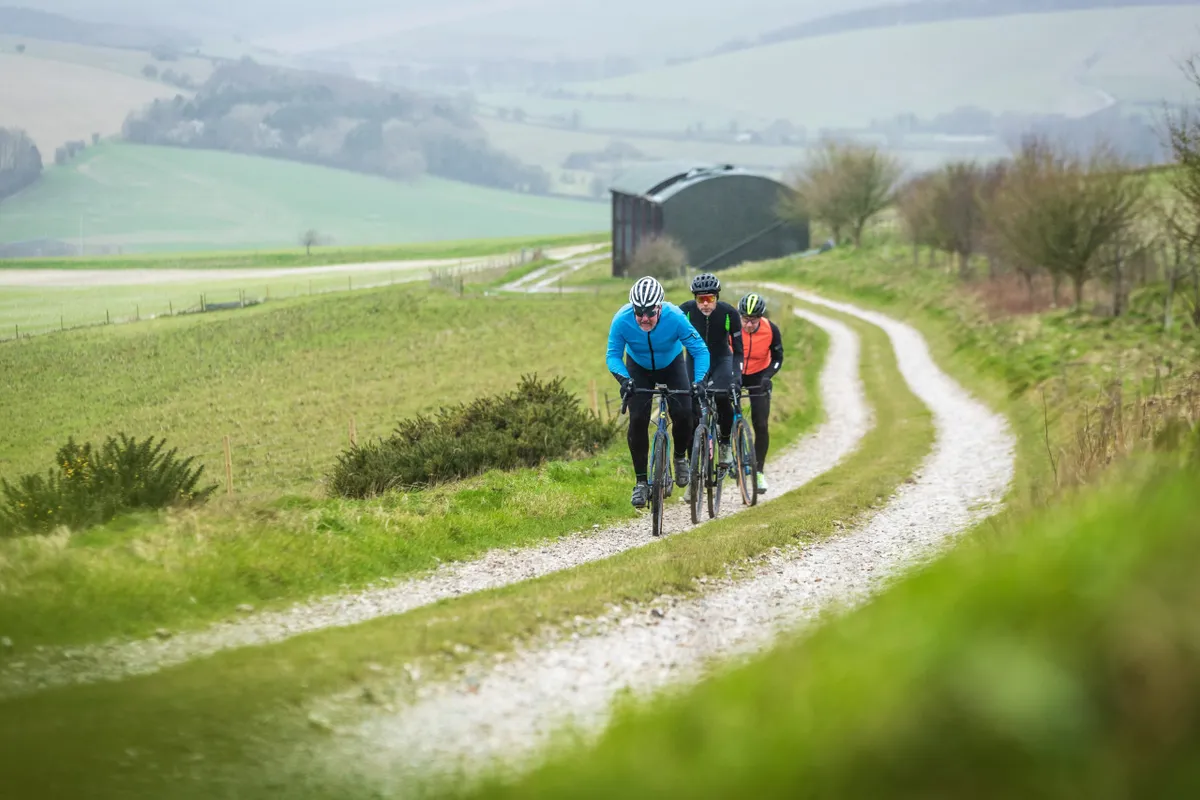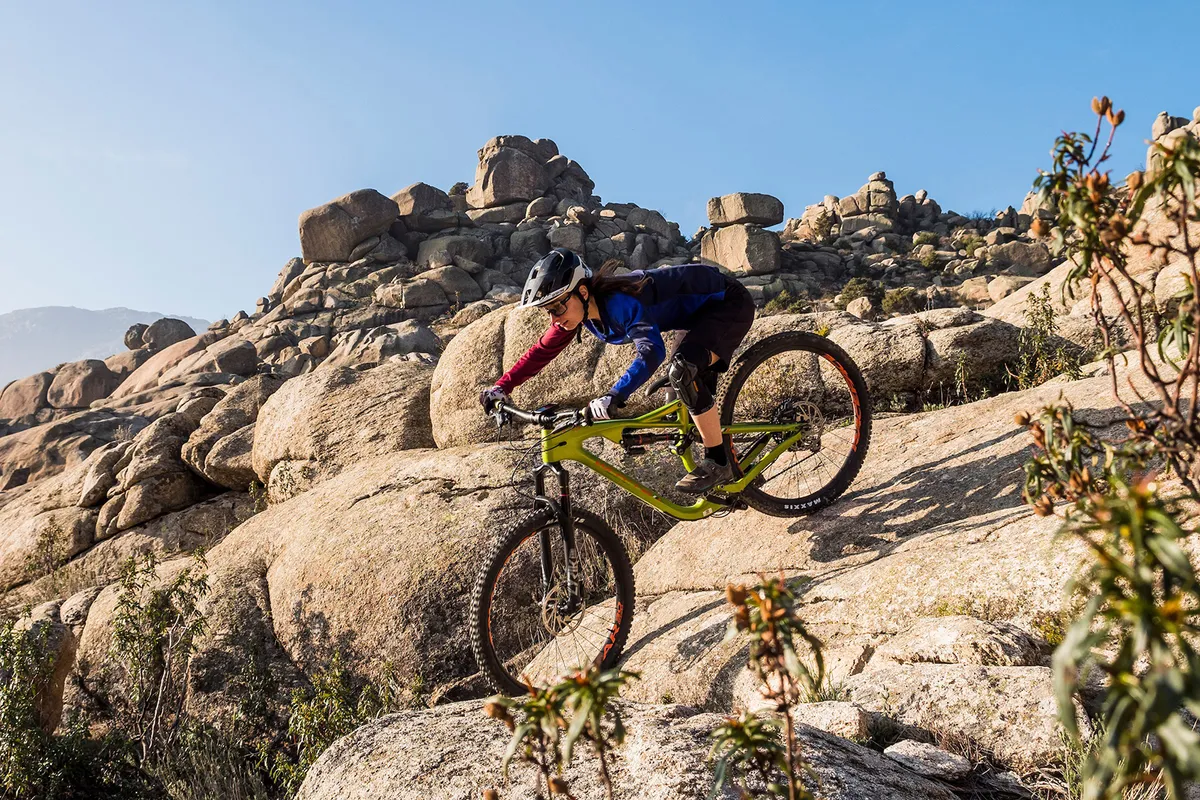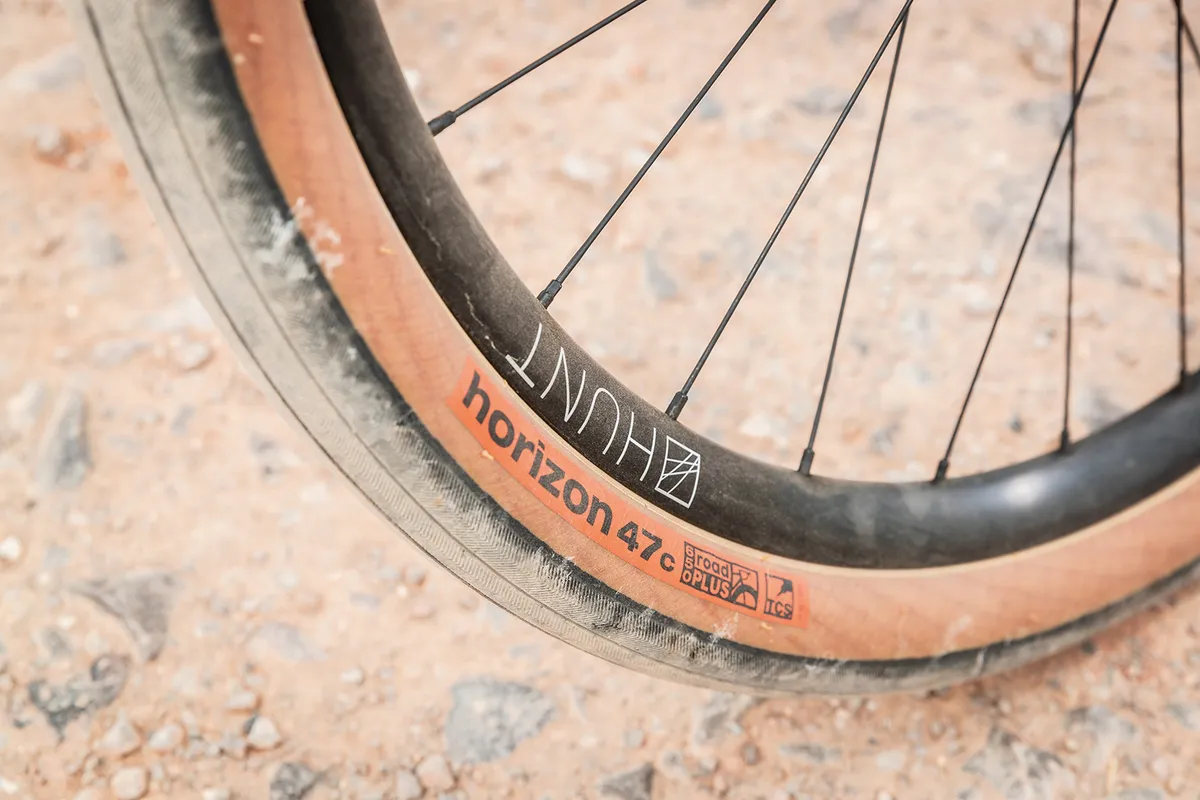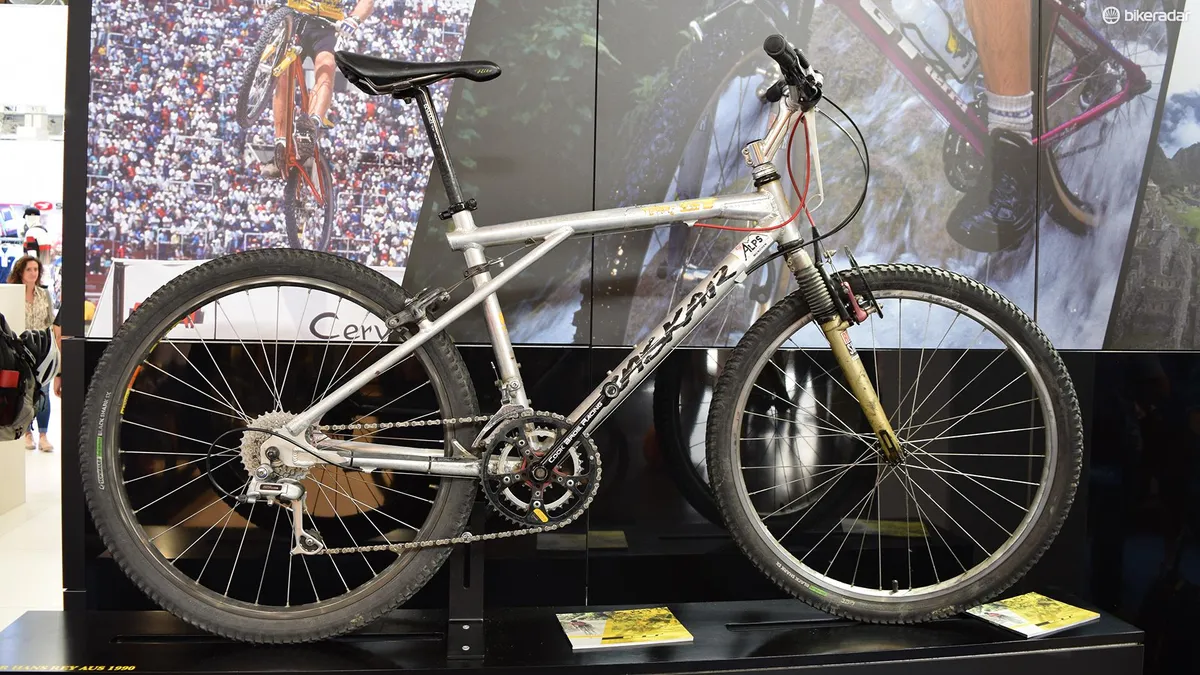What is the 650b or 27.5in wheel standard? If you ride a mountain bike or gravel bike, you may have seen or heard of 650b/27.5in wheels – or your bike might be fitted with them – but what are the advantages and disadvantages?
First things first, the terms 650b and 27.5in are interchangeable – we're talking about the same thing here.
The term 650b comes from French sizing nomenclature – the number indicating the approximate diameter of the wheel, including tyre, and the letter corresponding to an approximate width (the 700c standard for road bike wheels has the same origin).
A 650b wheel is one that's about 27.5 inches in diameter, when measured from tyre edge to tyre edge. This compares to 26in for a standard mountain bike wheel and 29in for so-called '29er' wheels (700c road wheels are also 29in in diameter).
- Mountain bike wheel sizes: 26in, 650b and 29in explained
- What are 29in mountain bike wheels? Pros and cons of big-wheeled bikes
Bear in mind that because tyre sizes vary significantly, this is only a rough measurement. A high-profile tyre fitted to a 26in wheel will usually be 27in or more in diameter.
In fact, fitting high-profile tyres to 26in wheels will give you a good idea of how 650b wheels with lower volume tyres, such as Maxxis’ standard 2.5in-wide Minions, will feel.
More simply, and to offer a direct comparison, a 29in/700c rim is 622mm in diameter when measured from rim bed to rim bed, while a 650b rim is 584mm in diameter.
More recently, 650b wheels have gained traction in the gravel riding world, with the wheel size seeing a return to its drop-bar roots having long fallen out of favour.

Some gravel bike manufacturers have decided to move away from the 700c wheel standard towards the smaller 650b wheel, while there is also a growing choice of aftermarket 650b wheels and tyres for gravel riders.
This stemmed from the desire to improve traction and comfort on gravel bikes by fitting larger volume tyres with a similar – or near-identical – outer circumference and diameter to a 700c setup with a narrower tyre.
What are the advantages of 650b wheels?

650b or 27.5in wheels offer most of the quick acceleration and nimble feel of 26in mountain bike wheels, but with a nod towards the smoother feel, extra stability and enhanced traction of 29in wheels. They're also more suitable for smaller riders than 29ers.
The 650b wheel is extremely popular across mountain bike disciplines – for many riders, they offer an ideal compromise between 26in and 29in wheels.
Frames designed for 27.5in wheels can be built using well-proven 26in wheel geometry and, in our opinion at least, usually end up looking neater than the often gangly-looking 29ers, with slightly better clearances.

For gravel riders, the higher volume tyres associated with 650b rims allow for lower air pressures.
In turn, this increases on-bike comfort because the depth of the tyre's sidewall and overall tyre volume absorbs some of the road's bumps without them reverberating into the rider's body.
650b wheels also enable riders to run high-volume tyres without adversely impacting on a frame's geometry or handling.
For example, a 42mm tyre mounted on a 650b rim has a similar diameter to a 700c rim with a 23mm tyre – a gravel rider gains the potential benefits of a plusher, grippier tyre, without requiring changes to frame geometry, which could affect a bike's handling.
Arguably, if you're comparing a like-for-like wheel build but swapping a 700c rim for a 650b one, then the smaller build is going to be lighter. The spokes will be shorter and the rim diameter smaller.
On the other hand, the smaller diameter rim may also be wider, which will add weight. It may also be stiffer, though this should be offset by the larger tyre.
What are the disadvantages of 650b wheels?

Critics argue that the 650b or 27.5in wheel is a jack-of-all-trades but master of none, when it comes to mountain bikes – it doesn't smooth out trail undulations as well as a 29in wheel or provide as much traction, while it's slower to accelerate than a 26in wheel and not as agile at slow speeds.
A 650b gravel wheel/tyre is also likely to have higher rolling resistance than a 700c wheel/tyre with a comparable overall diameter (as ever, tyre choice will have a significant part to play here).
The key, however, is the terrain you're riding (any increase in rolling resistance will be more keenly felt on smooth tarmac) and how much importance you place on the other benefits of 650b wheels (namely the comfort and grip associated with larger tyres).
If you're a gravel rider who actually spends most of their time on the road, occasionally venturing on to well-surfaced trails, a 700c setup might work for you. Equally, if you're taking your bike on to rough bridleways or borderline mountain bike trails, a high-volume 650b setup might better suit your needs.

As 650b is a relatively new trend for gravel bikes, there is also a smaller selection of wheels and tyres to choose from, though the range of options is growing.
Ultimately, as with most bike and component choices, choosing between a 650b/27.5in and 29in setup depends on your demands as a rider.
A history lesson: why have mountain bikes traditionally used 26in wheels?
The regular mountain bike wheel size arrived at 26in as much by accident as by design.
Many of the old steel-wheeled clunkers that gave birth to the original mountain bikes had 26in wheels, so early aluminium rims were simply made to replace them, although the long wheelbases and big tyre clearances of frames back then could easily have accommodated bigger wheels and tyres.

650b rims and tyres were readily available, as were the old 27in road rims, which effectively standardised into the 700c road rims of today. It’s those 700c road rims that have had their rim beds widened to take fatter 29in mountain bike tyres.
By the time the early mountain bike bandwagon got properly rolling, 26in rims and tyre choices were becoming more plentiful than 650b or 27in.
Inevitably, most frames were being designed around 26in wheels too, so the habit stuck with most mainstream frame builders.
A few custom builders were still meddling with big wheels on mountain bikes and it wasn’t long before Gary Fisher got people talking about them again by launching a range of 29ers.
A few others followed and within a year or two the fork, rim and tyre manufacturers started creating more choices for the slowly growing base of big wheel fans.
Now that 29ers were in the mainstream, it was an obvious step when 650b/27.5in followed. It made sense that wheels measuring halfway between the established 26in and 29in standards should be considered.
